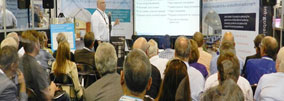Choose the right wrap to beat condensation and mould
In our last article, we discussed the risks and impact of condensation in energy-efficient building design. In this article we now review product solutions in greater detail to avoid condensation and mould growth in all climates zones while improving energy efficiency.
All best practice weather–tight systems should follow the ‘4 Ds’ of building performance: deflection, drainage, drying and durability. A significant part of achieving the 4D’s is by using the right wrap as not all wall wraps fit the bill. Commonly reflective foil wraps are alright to use in warmer climates and they block external vapour entering the cooled home and can provide reflective air gap R values. However, in colder climate zones where internal heating is used a vapour permeable wall wrap is required for moisture control. Warmer environments create higher volumes of moisture inside the building and when this vapour comes into contact with a colder surface, often inside the wall cavity, it condenses and absorbs into the timber frame and insulation batts. This ultimately leads to mould growth. By using Enviroseal Vapour Permeable wall wraps the moisture travels through the membrane and condenses on the cladding or brick and is unable to re–enter the building. Only vapour can flow through Enviroseal, liquid water molecules are too large hence Enviroseal is classified as a ‘water barrier’ while still being ‘vapour permeable’.
These airtight membranes are becoming more popular, because they reduce overall heat transfer of walls and energy use of the entire building. Data from the Building Science Corporation shows that compared to air barrier membranes, built walls transfer 31% more energy in winter and 26% more in summer — after accounting for wind. In other words, by reducing air flow through wall cavities insulation performance is improved by more than 20%.
Choosing the right wrap
The right building wrap is dependent on which climate zone you live in. Specifically if you live in hot and humid or cooler climates will determine the best wrap for your application.
In short, there are two main types of building wraps: vapour barrier and vapour permeable.
Hot and humid
In a tropical climate, the hot outside air carries a large amount of water vapour. This condensates when it meets a surface cooled by conditioned air inside.
In this instance the Bradford Thermoseal range of reflective foil wall wraps is the best option. Bradford Thermoseal Foil acts as a vapour barrier which stops the water vapour reaching the condensation-prone interior. So they’re best used in warmer climates, and in homes that are artificially cooled. Vapour barriers include:
- Reflective foil laminates — used for wall wrap and roof sarking in hot or humid climates with mild winters. Classed as medium to high vapour barriers, and high water barriers.
However, if you are unsure about the risk of condensation in your buildings, it is best to use CSR Bradford’s range of Enviroseal Vapour Permeable wall wraps.
Cooler climates
In colder areas, condensation works in reverse. This time it’s the warm interior air that holds high levels of water vapour. This condensates when it meets a cooler surface close to the outside of the building.
In this case, the Bradford Enviroseal Vapour Permeable membranes are a smart choice. Unlike foil layers that trap moisture, these let vapour escape from inside the structure to safely condensate on the outside.
A wrap on moisture
To test the effects of moisture under Australian conditions, CSR air–sealed soggy timber in different membranes. Here’s how each membrane faired:
- Traditional perforated foil membrane — dried in six months with some staining and mould.
- Impermeable foil membrane — still soggy at six months, with visible mould.
Now compare this to CSR’s Enviroseal vapour permeable wall wrap, which dried in four weeks without damaging the timber. Why? Because the construction fabric allowed water vapour to pass through, while blocking exterior water and dust.
See how our advanced vapour permeable wall wraps and roof sarkings can help you reduce the risk of moisture and mould, and beat condensation.



